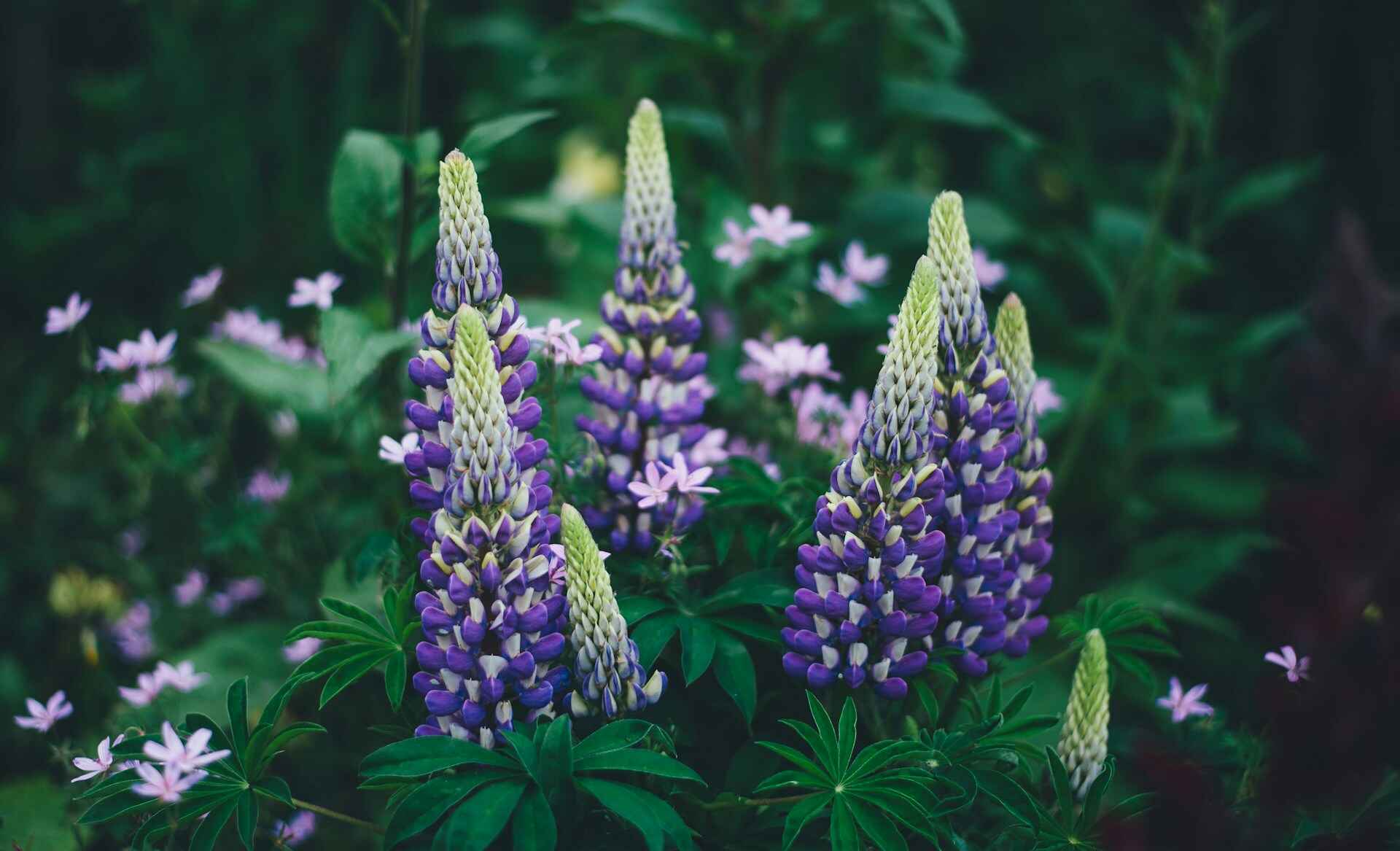Having a good grasp of plant root systems is essential when designing gardens and landscaping. There are a number of ways in which plants with shallow roots might help or hinder your gardening endeavors, depending on your perspective. To make your garden more sustainable, it’s helpful to know which plants have shallow roots. This is particularly true when working with limited space, raised beds, or regions with very thin soil layers. Let’s take a deep dive into the fascinating world of shallow-rooted plants, discussing their benefits, drawbacks, and garden-friendly kinds.
The Significance of Shallow Roots
Plants with shallow roots tend to be found in the upper layers of soil, near the surface. In contrast to deep-rooted plants, which send their roots to search for water and nutrients, shallow-rooted plants focus their growth on the upper layers of soil. This may be a boon or a bane depending on your local climate, irrigation habits, and soil type.
Storage and Availability of Water: Plants having shallow roots have an easier time reaching water that is close to the surface. But if the topsoil dries up fast, they’re also more likely to dry out.
Soil Type: A variety of soil types A garden with compact soil or only a thin coating of topsoil may be more suited for shallow-rooted plants than deep-rooted ones. Unlike plants that need deeper root systems, these roots don’t have to break through solid soil.
Wind Resistance: Plants with shallow roots are more vulnerable to damage or uprooting during severe gusts of wind since they do not offer as much stability in windy regions.
Examples of Shallow-Rooted Plants
Many plant species, including many common herbs, vegetables, and decorative plants, have relatively shallow root systems. Come with me as I show you a variety of plants that thrive in gardens with shallow roots.
1. Lettuce
Many people grow lettuce in their backyard gardens. Because of its shallow root system, it thrives in places with shallow soil, such as raised beds, containers, or other similar environments. Romaine, butterhead, and iceberg lettuces all need regular watering because their roots are close to the soil’s surface.
Growing Hint: Lettuce does best in cooler climates and needs regular watering. Because these plants only have shallow roots, it is essential to use mulch to keep the soil moist.
2. Spinach
Spinach is another type of leafy green that grows well in very thin soil because its roots are rather shallow. Its root system is fragile and spreads laterally instead than downwards. Spinach is perfect for growing in containers or in places with very thin soil because of this trait.
Growing Tip: For optimal spinach growth, choose soil that drains well and water lightly but frequently to keep the soil’s top layers moist.
3. Strawberries
The root systems of strawberries are notoriously shallow, spreading far but not deep. Because of this, they do wonderfully in containers, whether they are pots, hanging baskets, or raised beds. They are delicate to both wet and dry circumstances, therefore it’s important to give them drainage and water them consistently.
Growing Tip: As a growing tip, strawberries can have their soil moisture regulated and their shallow roots protected from heat and evaporation with a healthy layer of mulch.
4. Cabbage
Although its roots do stretch longer than spinach and lettuce, cabbage has rather shallow roots. But its root system is mostly limited to the upper twelve inches of dirt. Because of this, it can be used in gardens that cannot be tilled deeply.
Growing Tip: Cabbage does best in cooler climates, and for the best results, make sure the soil is always damp.
5. Herbs (Basil, Parsley, Cilantro)
Basil, parsley, cilantro, and many other culinary herbs thrive in containers or little gardens because their root systems are shallow. Because their root systems don’t go much deeper than 8 to 12 inches, you can grow them in practically any pot, even those with limited space, like window boxes.
Growing Tip: To promote bushier growth and avoid root crowding, prune and harvest herbs with shallow roots regularly.
Ornamental Plants with Shallow Roots
Shallow root systems are common among ornamental plants as well as many culinary and medicinal species. Plants like these are versatile and may liven up flower beds, groundcover, or container gardening.
6. Hostas
Hostas are popular shade plants because of their lovely foliage. Because of their relatively shallow root systems, they are ideal for use as underplantings under trees or in places with shallow soil. Even though hostas have shallow roots, they can cover bare soil effectively due to their wide spreading habit.
Growing Tip: A helpful hint for growing hostas is to use soil that drains well and to water them consistently, especially when they’re young.
7. Succulents
Plants with shallow root systems, like echeveria, aloe vera, and hens and chicks, are able to soak up water from morning dew or light rains. Where deep-rooting plants aren’t an option, such as in rock gardens or smaller containers, these plants thrive.
Growing Tip: Even though succulents can withstand dry conditions, they do best in soil that drains well. Their shallow root systems make them particularly susceptible to root rot caused by overwatering.
8. Ivy
Ground cover and climbing ivies, such as English ivy, are common in vertical gardening. They can quickly spread over the ground or even up walls thanks to their shallow roots, which let them cling to surfaces. In spite of this, ivies, if left unchecked, can spread like wildfire.
Growing Tip: Regular trimming will keep ivy from taking over your garden, so be sure to keep an eye on its growth.
How to Care for Shallow-Rooted Plants
There is a small difference in the care requirements for deep-rooted and shallow-rooted plant varieties. While these plants offer various benefits, such as adaptability for compact spaces, they also demand particular attention to water, soil, and environmental conditions.
1. Watering
Because shallow-rooted plants cannot access deep soil moisture, they rely substantially on regular irrigation. It’s crucial to keep the top layer of soil moist, especially during hot, dry weather. However, you also need to avoid overwatering, as the shallow root systems are subject to root rot.
Tip: Water your plants early in the morning or late in the evening to avoid evaporation, ensuring that the moisture reaches the roots.
2. Mulching
Mulch is a gardener’s best friend when it comes to shallow-rooted plants. A covering of organic mulch (such as straw, wood chips, or compost) helps manage soil temperature and moisture levels. Mulching also minimizes the need for frequent watering, as it slows down the evaporation process.
Tip: Apply mulch generously around your shallow-rooted plants, keeping it a few inches away from the stems to prevent rotting.
3. Soil Preparation
Shallow-rooted plants flourish best in loose, well-drained soil. Before planting, make careful to loosen the top 6-8 inches of soil, eliminating any large clumps or debris. Incorporate organic matter such as compost to boost nutrient content and drainage.
Tip: If you’re growing plants in containers, pick a potting mix that can hold water but won’t get soggy.
4. Wind Protection
Wind is more likely to uproot plants with shallow roots. Use windbreaks or group plants with shallow roots together to provide cover if you must plant in a particularly exposed spot.
Tip: To protect your shallow-rooted plants from powerful gusts of wind, put taller plants or shrubs around them.
Benefits of Shallow-Rooted Plants
Although there are certain disadvantages to gardening with shallow-rooted plants, there are also many advantages that make them a good choice in some cases. These plants are great options whether you’re short on room or want to increase water retention.
1. Fantastic in Pots and on Raised Beds
Container gardening, raised beds, and smaller gardens are ideal for plants with shallow roots. If you’re short on room or have compacted soil, don’t worry—these plants won’t suffer.
Perk: To spice up your garden show, try using various containers like hanging baskets, window boxes, or vertical gardens.
2. Minimal Upkeep
A lot of plants with shallow roots don’t need much care beyond watering and basic soil treatments. So, if you’re a novice gardener or just want to cut down on your gardening chores, they’re a great pick.
An advantage of growing shallow-rooted herbs is the ease and low maintenance required to harvest fresh herbs for cooking. Some examples of these herbs are mint, basil, and parsley.
3. Quicker Development
Many times, shallow-rooted plants outgrow their deep-rooted relatives because they direct all of their growth towards the upper soil layer. Fresh produce, herbs, or flowers will be at your fingertips in no time at all.
Benefit: You can get your hands on leafy greens like spinach and lettuce many times during the growing season, so you never run out of fresh produce.
Conclusion
For gardeners dealing with cramped quarters, shallow soil, or elevated beds, plants with shallow roots provide a distinct advantage. Plenty of shallow-rooted species can grow in varied gardening situations, ranging from ornamental plants like hostas and succulents to leafy greens like spinach and lettuce. These plants have the potential to thrive and provide beauty and productivity to your garden if you give them the care they need, such as frequent watering, mulching, and shelter from the weather.
You may cultivate a thriving garden, regardless of the weather, by learning about the anatomy of your plants’ roots and meeting their individual requirements. For this reason, shallow-rooted plants should be considered for future gardening endeavors by both novices and experienced green thumbs.

